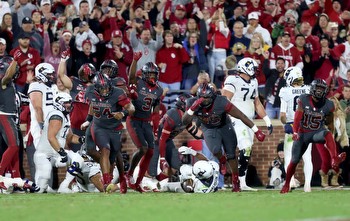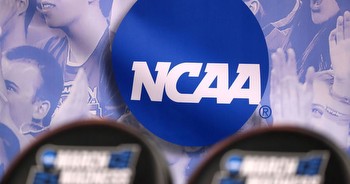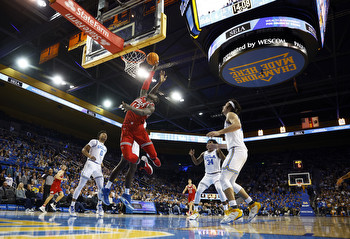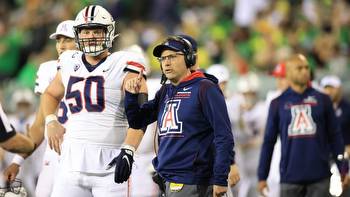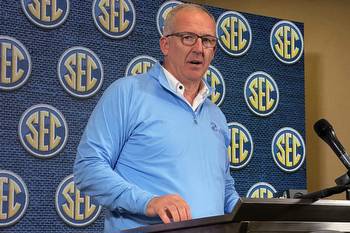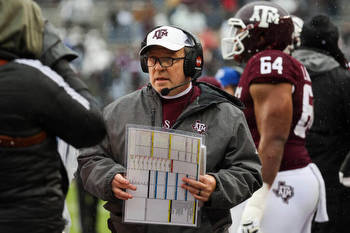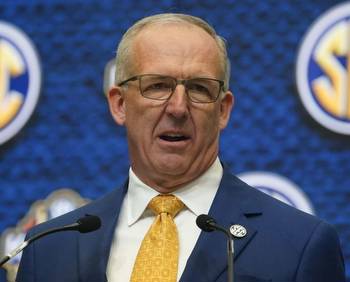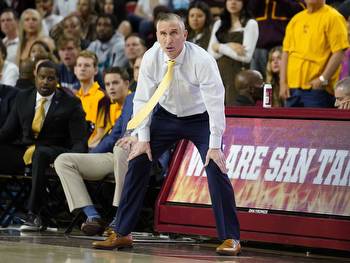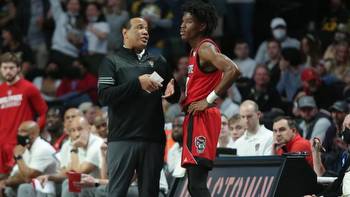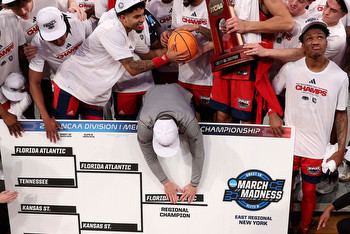Colorado doesn’t change Big 12 basketball much. Unless it’s just the first domino

College basketball coaches love to brag about their league. It’s an annual pastime as the NCAA Tournament approaches, because the goal is to get as many teams in the tournament from their league as possible. An NCAA Tournament appearance equals job security.
For the last decade, the Big 12 has been the best league in college basketball. The league’s coaches will tell you that, but more importantly, the metrics say so. At KenPom.com, which ranks conferences by the numbers and without bias, the Big 12 has been the top league in eight of the last 10 seasons. In those other two years, it ranked second. This is important when considering where the dominoes may fall now that the Big 12 is the aggressor in the conference realignment game.
Colorado rejoining the league has Big 12 basketball coaches feeling good about the future because it’s a sign of what’s to come. We’ve always been told that conference realignment is all about football, but the Big 12 has leaned into its status as the best league in college basketball, and its moves reflect that. According to multiple league coaching sources, Big 12 commissioner Brett Yormark met with the league’s basketball coaches earlier this summer and told them Colorado was coming — and that it was only the beginning of enhancing the league’s hoops brand.
“(Yormark said) I know Colorado is gonna drop, and when they drop, it could be the four corners (Arizona, Arizona State and Utah being the others) or it could just be Arizona,” said a Big 12 coach, who was given anonymity to be able to speak freely about what’s happened behind the scenes. “But if they mess around for too long, and then we bring in — he mentioned some East Coast schools, UConn being one of them — then that narrows the number of West Coast schools we can take, so some some of those other guys who would come with Colorado won’t be able to come with them. He knew Colorado was gonna drop; it was just a matter of when.”
When Yormark’s first prediction proved true this week, it was a sign to the league’s coaches that its future finally feels secure.
“Over the last decade, at one point they thought the Mountain West and Big 12 would join,” another Big 12 coach said. “Now after this move, it solidifies the Big 12 as a top three conference for years to come. This move takes us permanently off the chopping block.”
For the coaches, all eyes now turn to Arizona, because that enhances the narrative that the Big 12 is the king of hoops. The Wildcats, considering their current and historical relevance, would give the league another program with the resources to compete for a national title and annually make the NCAA Tournament. One coach believes that Connecticut is a priority for Yormark, adding UConn would be of similar significance to Arizona.
Colorado, by itself, is a solid up-the-middle single. The consensus among the six Big 12 coaches who spoke for this story was that the Buffaloes are a solid value add. “High floor,” one put it.
From a purely numbers standard, if you took the last 10 seasons for Colorado and added that team to the Big 12, the league’s average team rating (using KenPom) would drop 2.2 spots. Even though Colorado was worse than the average Big 12 team eight out of the last 10 years, the league would have maintained its “best league in the country” status with the Buffs.
When the Big 12 lost Colorado, it wasn’t really much of a hit because CU had historically been one of the league’s worst programs. Now Colorado is more middle of the pack because of its coach. Tad Boyle is the winningest coach in program history.
Having stable programs matters and has been part of the Big 12 secret sauce. It’s how nearly 70 percent of the league makes the NCAA Tournament every season. Over the last 10 years, the Big 12 had an average of 6.7 NCAA Tournament teams, and only four coaches (Trent Johnson, Travis Ford, Steve Prohm and Bruce Weber) lost their jobs based on performance.
In comparison in that same time span, 16 SEC coaches, eight Pac-12 coaches, 10 ACC coaches and six Big Ten coaches lost their jobs because of performance.
Big 12 schools mostly have done a good job hiring and retaining coaches. As one coach put it, there were clear investments into basketball. TCU, for instance, made itself into a viable basketball program by luring Jamie Dixon from Pittsburgh.
Coaches matter so much that you could argue losing Missouri was actually beneficial to the league from a purely basketball perspective during that time. Mizzou would have been a real drag. The Tigers had nine seasons where they ranked lower than the average Big 12 team, and most of those years were significantly lower. Did that have anything to do with no longer being in the Big 12? No. It was mostly one institution making a poor hire.
The league is well positioned to maintain its elite basketball status, in part dependent on who the coaches are going forward. Houston, for instance, is a great addition from a basketball perspective right now because Kelvin Sampson is the coach. That would not have been true 10 years ago when Houston was a middle-of-the-pack C-USA team with one NCAA Tournament appearance in the previous two decades. Cincinnati and BYU both have what the industry would consider solid up-and-coming coaches in Wes Miller and Mark Pope. Central Florida could be a doormat, and Johnny Dawkins could be on the verge of becoming an annual hot seat candidate depending on how his first few years in the league go. Either Dawkins raises the level with the help of a Big 12 recruiting bump, or it’s onto the next guy.
The harder question to answer is what the impact will be for a program like Colorado — or Arizona State and Utah, were those schools to join — in going from the Pac-12 to the Big 12. Coaches agree that opening up Texas as a recruiting ground for those schools is beneficial, but you could also argue losing California makes that advantage a wash. One coach argued a school like Colorado had a chance to win the Pac-12 — CU’s best finish in 13 seasons was third in 2021 — but competing for a championship in the Big 12 is less likely.
“This hurts them,” the Big 12 coach said, “because I thought the Pac-12 was soft. And I thought Tad Boyle, like even when he didn’t get the best players, his teams out-tough teams. They were one of the teams in the Pac-12 you didn’t want to play. I told (my scheduling guy), schedule anybody from the Pac-12, and Colorado was maybe the one exception. Tad’s teams are tough. He’s a Big 12 dude.”
You could also argue that the Pac-12 schools that land in the Big 12 are in a much better spot than those who do not.
“We were on the outside looking in, but every time there was talk about realignment, we’d all perk up and get excited,” Sampson said. “Now that you know that we’re not gonna stay at 13; we’re going to add somebody else. Who’s going to be? Let’s say it’s going to be one of five schools. I know exactly how those five schools feel. You want to be one of those schools that’s in the party. You can’t crash it. It’s invitation only, and you’re waiting on your invite, and you’re doing everything you can to get that invite.”
It’s wild how the narrative has changed in the time between Colorado bolting and rejoining. Back then you weren’t going to get any Big 12 coaches or administrators feeling confident about the conference outlook. Now the league looks as well positioned as any league outside of the Big Ten and SEC.
The future is no longer a concern. It’s more looking at the nitty-gritty details of what life will be like in this new iteration of the Big 12 going forward. It’s mostly positive, but one possible unintended consequence of expansion is the benefit the league had from being small: round-robin scheduling.
“You know what you’re going to get,” one coach said. “That’s the benefit when you’re scheduling the prior year. But you are going to have NCAA Tournament (caliber) teams that don’t get in the NCAA Tournament too.”
Adding a couple easier wins for those bubble teams might just help the league in its ability to increase its average number of tournament teams, which is good for business.
And when it comes to recruiting, stability is a great thing. So is the ability to tell players they’re going to get a chance to play in the best league in college basketball.
When Colorado, Missouri and Texas A&M left, panic ensued. When Oklahoma and Texas decided to leave for the SEC, those same uneasy feelings returned. But this week, everyone in the Big 12 is as confident as ever, especially its basketball coaches.
“In basketball, we’ve been the best,” one coach said. “Someone’s got to catch us to beat us.”

